Corwen is a town standing on the banks of the River Dee beneath the Berwyn Mountains, some ten miles west of Llangollen. The town was in the historic county of Merionethshire until 1974, when it became placed in the county of Clwyd, then in 1996 became part of the county of Denbighshire. The men of the town who fell in both World Wars are commemorated on an impressive war memorial gate which is situated at the entrance to the Memorial Park in Lon Las. The gates contain panels listing the people of the town of fell in both World Wars, plus two men who died in latter conflicts.
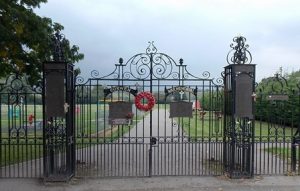
The Great War, 1914-1918
Thomas David Atkinson, Private, 3520, Welsh Guards. Thomas was the son of John and Ann Atkinson, of Angharad, Corwen. He married Hannah Read in 1911. Thomas worked as a farm labourer at Gwyddelwern, and applied at the Corwen military tribunal for an exemption from military service in 1916, due to being a farm worker. His appeal was initially successful, but in October 1916 Thomas enlisted at Wrexham into the Welsh Guards. After completing his training, he was posted to France at some time in 1917, joining the 1st Battalion, Welsh Guards. The battalion had been in France since 1915 attached to the Guards Division, and Thomas probably joined up with the battalion at Ypres, following its successful assault on the Pilckem Ridge on 31 July 1917. The Guards made another large scale attack on 10 October, towards the Houthulst Forest, at the northern edge of the salient, and in November moved south to take part in the Battle of Cambrai. The Guards moved into the battle area near Flesquières and supported the assault on Bourlon Wood, but then became caught in in heavy fighting when the Germans counter-attacked. After the battle died down, the Guards wintered in the Arras area and on 6 March 1918 moved back into the front line at Rouex, for another short rotation in the trenches. On the night of 10 March, the Welsh Guards launched a successful trench raid against the Germans opposite them, and on the following day, 11 March 1918, the Germans launched a retaliatory trench mortar barrage on the Welsh Guards lines. Thomas was killed during the barrage that day. He was 24-years-old and is buried in Level Crossing Cemetery, Fampoux, France.
Bertie James Clack, Lance Corporal, 64073, Machine Gun Corps. Bertie was the son of George and Elizabeth Clack, of Devizes. He had moved to Corwen to work as a gardener at Rug Gardens several years prior to the war and married Florence Roberts, of Cefn Rug, Corwen, on 13 December 1910, before getting a position at Plas Isa. The couple had two sons, Robert and Ernest. Bertie appealed against conscription in the Corwen military tribunal in June 1916, on the grounds of being a married man, but his exemption was refused, so he enlisted at Corwen into the 3rd Battalion, Royal Welsh Fusiliers on 12 December 1916. After completing his training, embarked at Folkestone for France on 11 February 1917, joining the 54th Company, Machine Gun Corps, which was attached to 54 Brigade, 18th (Eastern) Division. During March 1917 the Division followed the German Retreat to the Hindenburg Line, and in May took part in the Battle of Arras. The Division then moved to Ypres, and took part in the Battle of Passchendaele. In 1918 the Division was stationed south of the Somme, and was one of the Divisions hit there by the German Spring Offensive, which was launched on 21 March 1918, seeing heavy fighting whilst withdrawing towards Villers-Bretonneux. Bertie’s battalion then became renumbered to the 18th Battalion, Machine Gun Corps, still in the 18th Division. The Division took part in an attack on Villers-Bretonneux alongside the Australians and Canadians on 8 August 1918, an action which saw the will of the German army broken. From 21 August onwards the Allies launched an offensive all along the Western Front, and the 18th Division took part in the drive towards the Hindenburg Line. On 21 September 1918 the Division was fighting in the Battle of Épehy, when Bertie was killed in action in Quenchettes Wood, near Ronssoy. He was 29-years-old and is buried in Unicorn Cemetery, Vend’huile, France. His brother, Frederick, was killed when his submarine was lost on 11 June 1916.
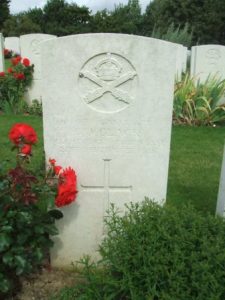
Caradog Davies, Corporal, 71250, Canadian Infantry. Caradog was born on 16 August 1892, the son of David and Elizabeth Davies, of Bryn Teg, Corwen. He emigrated to Canada in May 1913, and found work in a timber yard in Winnipeg. Caradog was serving with the 79th Cameron Highlanders of Canada Militia when he enlisted at Winnipeg into the 27th Battalion, Canadian Infantry on 25 October 1914. The battalion sailed from Canada for England on 17 May 1915, as part of the 2nd Canadian Division. The Division embarked for France in September 1915, and moved to Belgium to take over a section of the front between Ploegsteert Wood and St. Eloi. The Divisions first major action was during the Actions of the St. Eloi Craters from 27 March 1916, which raged for over two weeks. Caradog was wounded in the head during fighting at St. Eloi on 9 April 1916 and treated at the 3rd Canadian General Hospital, Boulogne before returning to action in time for the Canadian Corps move to the Somme. In October 1916 he was shot in the arm, and treated in the 15th General Hospital, Rouen before returning to his battalion once more. On 9 April 1917 the Canadians launched a famous assault on the Vimy Ridge, a high feature which overlooked the German held Douai Plain. The Canadians continued operations in the Arras sector after the capture of the ridge, and on 3 May 1917 launched an assault near Fresnoy. Caradog was killed by shrapnel whilst leading his platoon during the attack that day. The 24-year-old has no known grave and is commemorated on the Vimy Memorial, France.
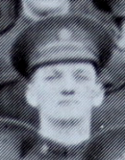
David William Davies, Private, 92213, Royal Welsh Fusiliers. David was the son of John and Miriam Davies, of Pentre Bach, Bryneglwys. He lived with his partner, Elizabeth Ellen Young, at Hill Street, Corwen prior to enlisting into the Royal Welsh Fusiliers and after the Armistice was posted out to Constantinople, joining the 11th Battalion, Royal Welsh Fusiliers on garrison duty in the city. During August 1919 David suffered an accident, which saw him break both of his legs badly. He was taken to the 82nd General Hospital in Constantinople where he died of his injuries on 22 August 1918, aged 30. David was buried in Haidar Pasha Cemetery, Turkey.
Joseph Herbert Davies, Lance Corporal, 18209, Worcestershire Regiment. Joseph was born on 14 March 1885, the son of Edward Evan Davies and Margaret Davies, of Mount Pleasant, Corwen. He worked for the Great Western Railway at Swansea prior to the war, and enlisted in the town into the Worcestershire Regiment soon after the outbreak of war. He was posted to the 10th Battalion, Worcestershire Regiment, which formed at Worcester, before moving to Salisbury Plain, joining 57 Brigade, 19th (Western) Division. The battalion landed in France on 19 July 1915, and the entire Division moved to the Nursery Sector at Fleurbaix for trench initiation. The Division was thrown into the deep end by launching a diversionary attack near Givenchy on 25 September 1915, while the British launched a larger offensive south at Loos, and suffered heavy casualties for no gain. During the summer of 1916 the Division saw heavy fighting on the Somme, where it again suffered heavily at La Boisselle. By the spring of 1917 the Division was in the Ypres Salient, and took part in the Battle of Messines, which was launched on 7 June 1917. Joseph was at some time transferred to the 3rd Battalion, Worcestershire Regiment, which was attached to 7 Brigade, 25th Division. The Division was in the same area as the 19th Division, and had also fought at Messines before heading slightly north in order to take part in the launching of the Third Battle of Ypres on 31 July 1917. Joseph was killed at Westhoek Ridge on 2 August 1917, aged 32. He has no known grave and is commemorated on the Ypres (Menin Gate) Memorial, Belgium.
Thomas Ogwen Davies, Private, 624817, Canadian Infantry. Thomas was born at Carrog on 12 August 1897, the son of William Thomas Davies, and Marie Davies (nee Griffiths). He emigrated to Canada following the death of his parents and worked as a farmer. Thomas enlisted at Wetaskiwin, Alberta into the 151st Overseas Battalion, Canadian Expeditionary Force on 16 February 1916. The battalion sailed from Canada for England on 3 October 1916. On 13 November 1916 Thomas was posted to France, joining the 8th Battalion, Canadian Infantry (Little Black Devils), which was attached to the 2nd Brigade, 1st Canadian Division. The Division had seen heavy fighting on the Somme, and moved to the Arras sector, to prepare for the forthcoming Battle of Arras, and famously took part in the capture of Vimy Ridge from 9 April 1917. On 25 July 1917 Thomas was admitted to No 10 General Hospital at Rouen after being wounded in the thigh. He returned to duty a month later, re-joining the 8th Battalion in the area north of Arras, near the village of Aix-Noulette. On 21 September 1917 the 8th Battalion relieved the 10th Battalion in the front line nearby. Thomas was killed in action by German artillery soon after the relief. He was 20 years old and is buried in Aix-Noulette Communal Cemetery Extension, France.
Tom Oswald Davies, Sergeant, 2288, Royal Welsh Fusiliers. Tom was the son of Watkin and Sarah Catherine Davies, of Wood Bank, Corwen. He worked as a plumber prior to the war and enlisted at Corwen into the 7th Battalion, Royal Welsh Fusiliers. The battalion was a Territorial unit, which mobilised for war at Newtown in August 1914, as part of North Wales Brigade, Welsh Division and moved to Conway until the end of the month, before moving to Northampton. In December the Division moved to Cambridge and then in May 1915 to Bedford, where the Division was numbered and the formation became 158 Brigade, 53rd (Welsh) Division. On 19 July 1915 the entire Division sailed from Devonport for Imbros and on 9 August 1915 landed at Suvla Bay. The infantry moved off the beaches into the bush, but due to a lack of maps and no knowledge of the terrain, many of the units became disorientated, and the situation became chaotic. Tom was killed in action on the following day, 10 August 1915, aged 30. He has no known grave and is commemorated on the Helles Memorial, Gallipoli.
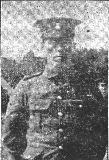
David John Edwards, Corporal, 6237, Royal Welsh Fusiliers. David was the son of Dorothy Ann Parkes, of 5, Aber View, Corwen. He worked as a builder’s labourer and had served with the Militia prior to enlisting into the 2nd Battalion, Royal Welsh Fusiliers at Wrexham on 6 December 1899. In January 1901 David was posted to China, and served there for almost two years Before going to India and then Burma with the battalion. The battalion remained in Burma until returning to England in March 1914, and was a vastly experienced unit when it embarked for France to join the BEF following the outbreak of war. Instead of going into the firing line, to the frustration of the men, the 2nd Battalion, Royal Welsh Fusiliers landed at Rouen and was put to work on Lines of Communications. On 22 August 1914 the battalion joined 19 Brigade at Valenciennes, and finally on 12 October 1914 became attached to the 6th Division. On 27 November 1914 David returned to England and was posted to the 3rd RWF. He returned to France on 1 April 1915, and saw further service in France until 6 December 1916, when he again returned to England and was posted to the Depot. David served with the 3rd Garrison Battalion of the regiment in Ireland until after the Armistice, surviving the war, but took ill and died of a brain haemorrhage at Crosshaven, Ireland on 20 November 1918, aged 40. His remains were brought home for burial in St. Mary’s Churchyard, Dolgellau.
John David Edwards, Private, 34942, Royal Welsh Fusiliers. John was the son of John and Mary Edwards, of Blaenddol, Corwen. He worked as a farm labourer prior to enlisting at Corwen into the 18th Battalion, Royal Welsh Fusiliers at Corwen on 6 December 1915 and was posted to Kinmel Park for training. On 28 May 1916 John embarked at Folkestone for Boulogne and was sent to the infamous Bull Ring at Étaples for further training before being posted to the 17th Battalion, Royal Welsh Fusiliers on 17 June. The battalion was attached to 115 Brigade, 38th (Welsh) Division and was at Chelers training when John joined its ranks. On 26 June the battalion marched out of Chelers to begin the long march south to the Somme with the Division. The Division moved to Toutencourt, and on the day that the Somme offensive opened, 1 July 1916, began to move towards the battle area. By 5 July the Division had reached Fricourt and the division then assembled to the south of their place of attack, Mametz Wood. On 7 July the Division launched its first assault on Mametz Wood on a two battalion frontage, but the attack failed, and the Divisional commander, Sir Ivor Phillips, was replaced. The Division then attacked again on a wider front on 10 July and penetrated the wood, where the men got caught up in ferocious fighting. John was killed in action in the wood on 10 July 1916, aged 21. He has no known grave and is commemorated on the Thiepval Memorial, France.
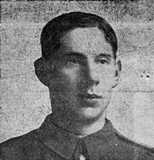
Robert David Edwards, Private, 34944, Royal Welsh Fusiliers. Robert was born on 26 August 1894, the son of Robert and Margaret Edwards, of Liverpool Cottages, Corwen. He was working as a Collier in South Wales when war erupted and travelled back home to Corwen with several friends to enlist into the 18th Battalion, Royal Welsh Fusiliers on 11 December 1914. He was posted to Kinmel Park for training, and on 8 August 1916 was posted to France, joining the 1st Battalion, Royal Welsh Fusiliers, which was attached to 22 Brigade, 7th Division. The Division was on the Somme, and had taken heavy casualties during its assault on Bois Francais and the village of Fricourt during the opening days of the Somme offensive, capturing the ground from which the 38th (Welsh) Division launched its assault on Mametz Wood a week later. The Division had then had a brief rest before moving back into the line and assaulting High Wood from 14 July, again suffering terrible casualties. Robert joined the battalion in a tented camp at La Chaussee, where it was training in readiness for the next phase of the Somme offensive. On 26 August the battalion moved from Dernancourt into the line in readiness to assault the village of Ginchy and took up positions against Delville Wood. On the morning of 27 August the battalion launched its attack and gained a section of German trench-line. Robert was killed at some time on the following morning, 28 August 1916, just two days after his 22nd birthday. He has no known grave and is commemorated on the Thiepval Memorial, France.
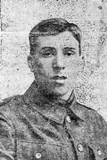
William Hugh Evans, Private, 8968, Royal Welsh Fusiliers. William was the son of John and Ann Evans, of Bryn Gaseg, Llanfihangel, Corwen. He worked as a farm servant, of Tyddyn Atcha, Corwen prior to the war. William enlisted at Dolgellau into the 4th Battalion, Royal Welsh Fusiliers on 29 March 1916, and was posted to the 3/4th Battalion, Royal Welsh Fusiliers at Oswestry. On 10 July 1916 he was posted to France to join the 1/4th Battalion, Royal Welsh Fusiliers, but was instead attached to the 6th Battalion, Welsh Regiment, which was the Pioneer Battalion to the 1st Division, which was on the Somme. William joined up with his new battalion to the south of Pozieres, where it was working on wiring and trenching while the Division was taking part in heavy fighting. On 14 August, a wet and miserable day, the 6th Welsh moved to Fricourt Wood to relieve another battalion, ordered to dig a new trench towards Martinpuich which was begun on the following morning, 15 August 1916. The battalion came under heavy fire and had to abandon part of the work after suffering a number of casualties. William was among five men killed that morning. The 26-year-old has no known grave and is commemorated on the Thiepval Memorial, France.
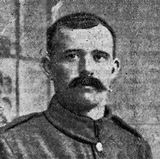
Alfred John Foreman, Private, M2/052038, Army Service Corps. Alfred was born in Devizes in 1893, the son of Alfred and Ada Foreman. He moved to Corwen as a young man to work as a Chauffeur to Mr William Roberts, of Cefn and then worked as a motor mechanic at the Crown Hotel, Corwen. Alfred enlisted at Stockton-on-Tees into the Army Service Corps, and was posted to France with the 621st Motor Transport Company on 5 March 1915. He married Dorothy Mason, the sister of Mrs Plack, of the Crown Hotel, on 25 June 1915 whilst home on sick leave, after contracting blood poisoning. Alfred’s health continued to fail in the coming months, and he died at his parents home at 14, St. John’s Street, Devizes on 18 January 1916, aged 24. He was buried with full military honours in Devizes Cemetery.
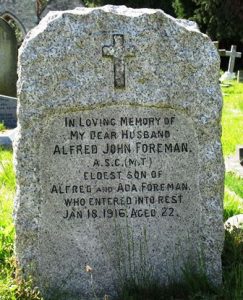
Robert Thomas Griffiths, Lance Corporal, 47211, Welsh Regiment. Robert was the only son of Margaret Griffiths, of Bradford House, Corwen. He worked as a Draper in Manchester prior to the war. Robert enlisted into the army and was posted to Salonika in 1916, joining the 11th Battalion, Welsh Regiment. The battalion had been raised as the Cardiff Pals battalion, and was attached to 67 Brigade, 22nd Division. The Division fought a hard campaign against the Bulgarians who had invaded Greece following the outbreak of war, and suffered several setbacks before finally defeating them at the Second Battle of Doiran, which forced the Bulgarians to surrender on 30 September 1918. Robert remained in Salonika after the Armistice, being attached to the 1036th Divisional Employment Company, Labour Corps. He took ill after the surrender of Germany, and died of pneumonia at the 28th General Hospital, Salonika on 22 December 1918, aged 35. He is buried in Mikra British Cemetery, Kalamaria, Greece.

Robert Ernest Herd, Private, 60638, Royal Welsh Fusiliers. Robert was the son of William and Eliza Herd, of Aqueduct Inn, Stretten, Stafford. He came to Corwen after becoming the Agent for the Rhug Estate in 1912, and married Jane Mary Roberts, of Carrog, on 8 May 1912. He was also the Secretary of the Merionethshire Boy Scouts movement. The couple lived at Cefn Rhug, Corwen, where their only child, Dorothy, was born in 1916. Robert was conscripted in September 1916, but Mr Lloyd John, Solicitor for the Rhug Estate, appealed at the Corwen military tribunal, stating that he already had five brothers serving, and that he was indispensable on the estate. The appeal was refused, so Robert enlisted at Dolgellau into the Royal Welsh Fusiliers. He was posted to France after completing his training, joining the 2nd Battalion, Royal Welsh Fusiliers, which was attached to 19 Brigade, 33rd Division. He would have joined the battalion in the Arras sector, where it saw heavy fighting near the Hindenburg Line, following the German withdrawal in March 1917. The Division moved to Bray Dunes, near Dunkirk, on 1 August in readiness for a planned offensive on the Belgian coast, code-named Operation Hush and took up positions on the front line near La Panne. It soon became obvious that the offensive at Ypres was failing, however, so the operation was called off and the 33rd Division was sent to Ypres on 15 September, marching to the salient over the coming days, before taking over a section of trench at Ypres on 25 September. On the following morning, 26 September 1917, the 2nd Battalion, Royal Welsh Fusiliers marched past Stirling Castle, to launch an attack alongside the Australians against Polygon Wood, but came under terrible artillery and machine-gun fire. Robert was shot in the head during the attack that morning. The 30-year-old has no known grave and is commemorated on the Tyne Cot Memorial, Belgium.

Edward Hughes, Private, 34938, Royal Welsh Fusiliers. Edward was the son of Edward Edwards Hughes and Catherine Hughes, of the Royal Oak, London Road, Corwen. He worked as a barman for his parents prior to enlisting at Corwen into the 18th Battalion, Royal Welsh Fusiliers together with several of his friends on 29 November 1915 and was posted to Kinmel Park for training. On 28 May 1916 Edward embarked at Folkestone for Boulogne and was then posted to the 38th Infantry Base Depot, known as the Bull Ring, at Étaples. On 7 June 1916 he was posted to the 17th Battalion, Royal Welsh Fusiliers, which was attached to 115 Brigade, 38th (Welsh) Division and was at Chelers training. On 26 June the battalion marched out of Chelers to begin the long march south to the Somme with the Division. The Division moved to Toutencourt, and on the day that the Somme offensive opened, 1 July 1916, began to move towards the battle area. By 5 July the Division had reached Fricourt and the division then assembled to the south of their place of attack, Mametz Wood. On 7 July the Division launched its first assault on Mametz Wood on a two battalion frontage, but the attack failed, and the Divisional commander, Sir Ivor Phillips, was replaced. The Division then attacked again on a wider front on 10 July and penetrated the wood, where the men got caught up in ferocious fighting. Edward was shot in the leg on 10 July and was evacuated to the 2nd Stationary Hospital at Abbeville, where he died of his wounds on 21 July 1916, aged 20. Edward is buried in Abbeville Communal Cemetery, France.
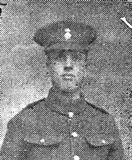
Gwilym Llewelyn Hughes, Private, 68452, Royal Welsh Fusiliers. Gwilym was the son of David and Elizabeth Hughes, of 3, Cambrian Terrace, Corwen. He worked in a cotton warehouse in Liverpool prior to enlisting into the Royal Welsh Fusiliers in March 1916, and after completing his training, was posted to France in May 1917, joining the 2nd Battalion, Royal Welsh Fusiliers, which was attached to 19 Brigade, 33rd Division. He would have joined the battalion in the Arras sector, where it saw heavy fighting near the Hindenburg Line, following the German withdrawal in March 1917. The Division moved to Bray Dunes, near Dunkirk, on 1 August in readiness for a planned offensive on the Belgian coast, code-named Operation Hush and took up positions on the front line near La Panne. It soon became obvious that the offensive at Ypres was failing, however, so the operation was called off and the 33rd Division was sent to Ypres on 15 September, marching to the salient over the coming days, before taking over a section of trench at Ypres on 25 September. On the following morning, 26 September 1917, the 2nd Battalion, Royal Welsh Fusiliers marched past Stirling Castle, to launch an attack alongside the Australians against Polygon Wood, but came under terrible artillery and machine-gun fire. Gwilym was one of two Corwen men killed during the fighting that morning, when he was shot dead by a sniper. The 24-year-old has no known grave and is commemorated on the Tyne Cot Memorial, Belgium.
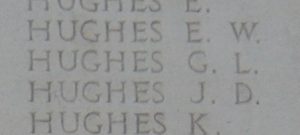
Lewis Hughes, Private, 25949, Royal Welsh Fusiliers. Lewis was the son of Peter and Gwen Hughes, of 7, Mill Street, Corwen. He worked as a carriage cleaner at Wallasey prior to the war and enlisted there into the 17th Battalion, Royal Welsh Fusiliers on 25 April 1915. The battalion was attached to 115 Brigade, 38th (Welsh) Division, and Lewis embarked for France with the battalion at Southampton on 4 December 1915. The Division moved to the Nursery Sector near Fleurbaix for trench initiation alongside the Guards Division before taking over a section of line near Cuinchy, and over the coming months held several separate sectors here before being moved south to the Somme in June 1916, to take part in the great offensive which was launched there on 1 July 1916. The Division moved into positions south of Mametz Wood by 6 July and on the following morning launched its first assault on Mametz Wood. The attack failed, and the Divisional commander, Sir Ivor Philipps, was replaced before the Division attacked again on 10 July, and spent two savage days fighting in the wood before being relieved, and moved to the Hébuterne sector to hold the line. On 27 July 1916 the 17th RWF was in the front line at Hébuterne, carrying out wiring duties, when Lewis was killed. The 27-year-old is buried in Euston Road Cemetery, Colincamps, France.
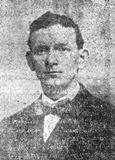
Robert Hughes, Gunner, 150915, Royal Garrison Artillery. Robert was the son of Hugh and Mary Hughes, of Bryntangor Farm, Corwen. He worked as an assistant grocer for his aunt, Annie Eliza Hughes, at Coedpoeth prior to the war and enlisted at Southsea into the Royal Garrison Artillery. Robert was posted to the 153rd Siege Battery, Royal Garrison Artillery, and moved to France with the battery on 29 August 1916. The battery moved to the Loos area and set up at Mazingarbe and in October moved to Saily-au-Bois. It remained here until March 1917 when it moved to Fonquevillers, on the Somme, and set up near Gommecourt Wood. The following month the battery moved to St. Nicolas, near Arras and at the end of May moved to Ypres, setting up near Belgian Chateau, in readiness to take part in the forthcoming Passchendaele offensive. The battle was launched on 31 July 1917 and over the coming weeks Robert’s battery worked tirelessly on counter-battery operations to support the offensive. By the end of August the war diary noted that the battery had fired 6,167 rounds that month, making a total of 46,556 since arriving in France. Robert was among three men wounded whilst the battery was carrying out counter-battery fire on 19 September 1917, and was evacuated to the 2nd Casualty Clearing Station at Outtersteene, where he died of his wounds on the following day, 20 September 1917, aged 28. He is buried in Outtersteene Communal Cemetery Extension, Bailleul, France.
Thomas Hughes, Private, 127579, Machine Gun Corps. Thomas was the son of Robert Thomas Hughes and Harriett Hughes, of Queen Square, Corwen. He worked at Ruabon prior to the war and enlisted there into the Royal Welsh Fusiliers. After completing his training, Thomas was posted to France, joining the 38th Battalion, Machine Gun Corps, which was attached to the 38th (Welsh) Division. He probably joined the Division following its move to the Somme sector at the end of March 1918, where it had relieved the battered 2nd and 47th Divisions. The 38th Battalion, Machine Gun Corps had only been formed on 2 March 1918, from the 176th Machine Gun Company. The Division held the Bouzincourt Ridge sector of the line north of Albert, facing the Thiepval Ridge, and on 21 August 1918 launched its offensive across the flooded Ancre valley towards Thiepval Ridge. The 38th Battalion, MGC split its Companies to cover each of the attacking battalions of the Division during the crossing, and throughout the days fighting suffered eleven men killed, among them was Thomas Hughes. He was 23 years old and is buried in Forceville Communal Cemetery and Extension, France.
Thomas John Hughes, Private, 44242, Royal Welsh Fusiliers. Thomas was the son of Hugh and Margaret Hughes, of Pig-y-Bont, Llangwm, Corwen. He married Mary Jenkins, the daughter of David Jenkins, of Berwyn Terrace, Corwen on 10 December 1913. He enlisted at Dolgellau into the 3rd Battalion, Royal Welsh Fusiliers on 5 June 1916 and was posted to the Depot at Wrexham, before going to Litherland Camp for training. On 4 January 1917 Thomas embarked for France and on 28 January 1917 was posted to the 1st Battalion, Royal Welsh Fusiliers. The battalion was attached to 22 Brigade, 7th Division, and was at Rubempre, rebuilding after its efforts on the Somme the previous year. On 18 February the battalion moved to Bus, and on the following day moved to Bertrancourt, where it supplied working parties before relieving the 62nd Division at Beaumont Hamel. On 25 February the battalion received reports that the Germans in their front had withdrawn, so the battalion was readied for an assault on the village of Puisieux. On the afternoon of 26 February, the battalion moved forwards and launched an assault at Kaiser Lane and Sunset Trench, before moving into Puisieux. Fighting continued throughout the night and throughout the following day, 27 February 1917. Thomas had been badly wounded in the back during the initial attack, and died of his wounds on 27 February 1917, aged 28. He is buried in Couin New British Cemetery, France.
Daniel Jones, Private, G/20472, East Surrey Regiment. Daniel was the son of Benjamin and Jane Jones, of Vale View, Corwen. He had served an apprenticeship as a Draper at Bala and was employed as a draper at Commerce House, Corwen before taking up a situation at Messrs Owen Owen, Liverpool. He then moved to London, where he was employed as a buyer for Harrod’s. Daniel had enlisted into the 10th Battalion, East Surrey Regiment soon after the outbreak of war, and married Emma Hancock, of Furness Road, Harlesdon, London on 29 May 1916, whilst on leave. He embarked for France soon afterwards, joining the 7th Battalion, East Surrey Regiment, which was attached to 37 Brigade, 12th (Eastern) Division. By June the Division was in position at the Somme, and attacked Ovillers on 2 July, alongside the 19th Division, and remained in the front line until being relieved on 6 July, moving to billets in Warloy. The 12th Division moved back into the line on 27 July and Daniel’s battalion was in reserve at Martinpuich Wood, providing working parties. Daniel was killed in action on 31 July 1916 when the 7th East Surreys moved into the new front line north of Ovillers. He was 35 years old and is buried in Blighty Valley Cemetery, Authuile Wood, France.
Daniel Jones, Private, 73163, Royal Welsh Fusiliers. Daniel was the son of Thomas and Elizabeth Jones, of 6, Victoria Terrace, Corwen. He worked at Aberdare prior to the war, and enlisted into the Royal Welsh Fusiliers in March 1917. He was posted to France after completing his training, joining the 9th Battalion, Royal Welsh Fusiliers, which was attached to 58 Brigade, 19th (Western) Division. He probably joined the battalion following its efforts during the Battle of Messines Ridge in June 1917, where it had suffered heavy casualties fighting around Oostaverne. The Division then took part in the main Passchendaele offensive, attacking again from Oostaverne on 31 July, and then on 20 September taking part in another attack during the main Battle of the Menin Road. The Division remained in the line over the coming weeks, until being relieved in the first week of November and moved to Ebblinghem. On 6 December 1917 the entire Division entrained for the Third Army area, and took over a section of line on the Flesquières Salient where it remained over the winter. The Division was in reserve when the Germans launched their Spring Offensive on 21 March 1918, and with the front line soon over-run the 19th Division received orders to Stand-To and prepare to move forward. 58 Brigade moved forward to the ridge west of Hermies that afternoon and began to dig in, but was then ordered to move to Lebucquière. The Germans attacked again on the following morning and, during heavy fighting around Beugny, Daniel was reported as missing. He was later found to have been captured by the Germans and taken to Freiburg POW Camp in Germany. He became ill whilst in captivity and was taken into the Camp Hospital at Freiburg where he died on 28 June 1918, aged 19. Daniel is buried in Niederzwehren Cemetery, Kassel, Germany.
David Jones, Private, 2101, Welsh Guards. David was the son of Robert and Margaret Jones, of Llwyncwbe, Llangwm, Corwen. He was a well-known Harpist and worked as a Postman prior to enlisting at Oswestry into the Welsh Guards and after completing his training was posted to France, joining the 1st Battalion, Welsh Guards, which was attached to the Guards Division. He joined the battalion prior to its move south from Loos to the Somme in July 1916, and took part in heavy fighting at the Battle of Flers-Courcelette, and then at the Battle of Morval, where the Guards captured the village of Lesboeufs. The Guards Division remained on the Somme over the winter. David took ill around Christmas 1916 and was invalided to the Hospital at Le Treport where he died of septicaemia on 7 January 1917, aged 28. He is buried in Mont Huon Military Cemetery, Le Treport, France.
Edward Williams Jones, Private, 59271, Northumberland Fusiliers. Edward was the son of Thomas Owen Jones and Anne Catherine Jones, of Pen-y-Park, Bryn, Corwen. He worked as an Insurance Clerk at Wrexham prior to the war, and enlisted in the town into the Army Ordnance Corps. Edward was later transferred to the 25th Battalion, Northumberland Fusiliers, known as the 2nd Tyneside Irish, which was attached to 103 Brigade, 34th Division. The battalion had landed in France in January 1916, and saw its first major action on the Somme, during the Battle of Albert, where it suffered severe casualties during its part in the attack on La Boisselle. The Division saw further fighting throughout the remainder of the Somme offensive and in 1917 took part in the Battle of Arras. On 3 February 1918 Edward’s battalion transferred to 102 Brigade, in the same Division, and was in the St. Quentin sector. The Division was caught up in the heavy fighting which followed the German Spring Offensive on 21 March 1918, and saw heavy fighting over the coming days, before being moved north to Flanders to rest. It was unfortunately caught up in the second phase of the German offensive, which was launched along the Lys Valley on 9 April, and the Division was hit by the Germans while holding the front line at Houplines at 07.00 on 11 April 1918. Edward’s battalion held its ground, despite several waves of German attacks, but the battalions on each flank were over-run, so his battalion was forced to withdraw to the Nieppe to Bailleul road. Edward was killed in action during the terrible fighting that day. The 28-year-old has no known grave and is commemorated on the Ploegsteert Memorial, Belgium.
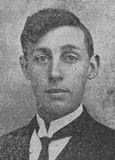
Hugh Gwilym Jones, Rifleman, 4377, London Regiment. Hugh was the son of Robert and Margaret Jones, of Stafford House, Bridge Street, Corwen. He worked as a telegraph messenger and then as a postman at Bangor prior to the war, and enlisted at Bangor into the London Regiment. Hugh was posted to France early in 1916, joining the 8th Battalion, London Regiment (Post Office Rifles), which was attached to 140 Brigade, 47th (2nd London) Division. He joined the battalion in billets at Estrée-Cauchy, a village north-west of Arras. On 2 July 1916 the battalion moved forwards into support and on 8 July moved into the front line at Villers-en-Bois, to begin a routine tour in the trenches. Hugh was on duty in the trench here on 10 April 1916, when he was killed by a grenade. He was 24 years old, and is buried in Cabaret Rouge British Cemetery, Souchez, France.
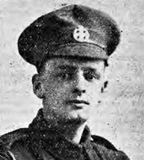
Owen Vaughan Jones, Private, 646244, Canadian Infantry. Owen was born on 26 October 1895, the son of William and Margaret Jones, of London Road, Corwen. He emigrated to Canada in 1912 and found work as a Rancher at Postill Ranch, Vernon, British Columbia. Owen enlisted at Vernon on 7 October 1916 into the 158th (Overseas) Battalion, Canadian Expeditionary Force. He sailed from Halifax aboard the SS Olympic on 14 November 1916, and arrived in England six days later. On 6 March 1917 he proceeded to France to join the 29th Battalion, Canadian Infantry, but was instead posted to the 7th Battalion, Canadian Infantry, which was attached to the 2nd Brigade, 1st Canadian Division. The Division was in the Arras sector, preparing to launch an assault on the heights of Vimy Ridge. The assault was launched on 9 April 1917, as part of the greater Battle of Arras, and the Canadian Corps successfully captured the ridge, allowing a view over the German held Douai Plain. After the battle, Owen’s battalion moved into reserve at Winnipeg Huts, and on 26 April moved back into the front line near Arleux. On 27 April 1917 the Canadian Corps attacked the German held village of Arleux-en-Gohelle. Owen was killed in action during the days fighting. He was 21 years old and is buried in Bois-Carre British Cemetery, Thelus, France.
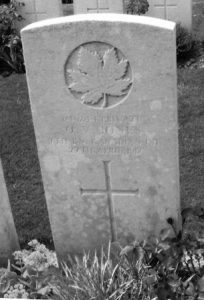
Robert Jones, Private, SPTS/1564, Royal Fusiliers. Robert was the only son of Robert and Elizabeth Jones, of Maes Brith Cottages, Corwen. He enlisted at Corwen into the Royal Fusiliers, and was posted to the 23rd Battalion, Royal Fusiliers (1st Sportsmens), which was a Pals Battalion, made up of sportsmen, attached to 99 Brigade, 33rd Division. Robert landed at Boulogne with the battalion on 16 November 1915. On 25 November the entire 99 Brigade transferred to the 2nd Division and took up billets in Bethune. Robert’s battalion saw its first taste of trench life on the following day, when it marched to La Bassée, through battle-scarred country, and was initiated into trench warfare, beginning the usual system of trench rotation, interspersed with specialist courses, such as the use of gas helmets. The battalion spent several weeks in the Givenchy sector at the beginning of 1916, before the Division moved southwards, taking over the Souchez sector at the end of February. Robert was wounded during one of the battalion’s routine spells in the trenches at Souchez, and died of his wounds on 9 May 1916, aged 22. He is buried in Bruay Communal Cemetery Extension, France.
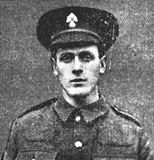
Robert Pierce Jones, Private, 3/59064, Cheshire Regiment. Robert was the son of Isaac and Grace Jones, of Tyn-y-Cefn, Corwen. He married Nellie Edwards at Corwen in 1912, and the couple lived at Berwyn Terrace, Corwen. Robert worked as the Queensferry Munition Works prior to enlisting into the Royal Field Artillery in October 1916. In January 1917 he was transferred to the 3rd Battalion, Cheshire Regiment, and was posted to France soon afterwards, joining the 13th Battalion, Cheshire Regiment, which was attached to 74 Brigade, 25th Division. The Division was in the Ploegsteert area when Robert joined its ranks, holding the line to the east of Ploegsteert Wood, and alternated between this sector and Le Touquet over the coming weeks. Robert was seriously wounded in the right leg during one such tour of the trenches in April 1917. He was evacuated to No 2 Casualty Clearing Station, Bailleul where he died of his wounds on 29 April 1917, after having his leg amputated. He was 26 years old and was buried in Bailleul Communal Cemetery Extension, France.
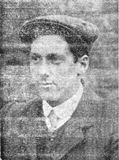
David Owen, Private, 25436, South Wales Borderers. David was the son of Robert and Mary Ann Owen, of 2, Liverpool Terrace, Corwen. He worked as a Grocers Assistant prior to enlisting into the 3rd Battalion, King’s Shropshire Light Infantry at Dolgellau on 22 February 1917 and was posted to Pembroke Dock for training. David was then transferred to the 3rd Battalion, South Wales Borderers, and on 5 July 1917 embarked for France, joining the 6th Battalion, South Wales Borderers. Within weeks of joining the battalion, David began suffering from epilepsy and was sent to hospital in Rouen. He was then medically downgraded before joining the 5th Infantry Base Depot. On 24 October David was transferred to the 774th Employment Area, Labour Corps. He served in France until 19 August 1918 when he returned home on leave, and upon his return to France joined the 77th Area Employment Company. David survived the war, and remained in Belgium after the Armistice. He became ill in February 1919 and was sent to No 48 Casualty Clearing Station, Namur, where he died of broncho pneumonia on 18 February 1919, aged 20. David is buried in Belgrade Cemetery, Namur, Belgium.
Thomas James Peake, Private, 31946, Royal Welsh Fusiliers. Thomas was the son of William and Winnie Peake, of 7, Rock Terrace, Corwen. He had served for fifteen years with the Royal Welsh Fusiliers after enlisting as a young man, and had seen service on the North West Frontier and during the Boer War, before returning home to Corwen by 1911, and worked as a slate quarrier prior to the Great War. In the summer of 1915 Thomas re-enlisted into the Royal Welsh Fusiliers and was posted to the 20th Battalion, Royal Welsh Fusiliers at Kinmel Park. Thomas was training at Kinmel Park when he took ill, and was brought to Bangor Military Hospital, where he died on 1 March 1916, aged 45. His remains were brought home for burial with full military honours in Ss. Mael and Sulien Churchyard, Corwen.
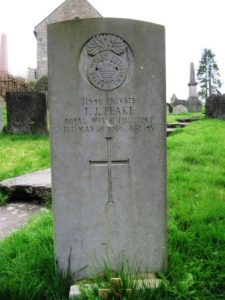
Alfred Ernest Pearce, Sergeant, 2471, Royal Welsh Fusiliers. Alfred was the son of Benjamin and Ellen Pearce, of Brompton House, Corwen. He worked as a Postman prior to enlisting at Corwen into the 7th Battalion, Royal Welsh Fusiliers soon after the outbreak of war. The battalion was a Territorial unit, which mobilised for war at Newtown in August 1914, as part of North Wales Brigade, Welsh Division and moved to Conway until the end of the month, before moving to Northampton. In December the Division moved to Cambridge and then in May 1915 to Bedford, where the Division was numbered and the formation became 158 Brigade, 53rd (Welsh) Division. On 19 July 1915 the entire Division sailed from Devonport for Imbros and on 9 August 1915 landed at Suvla Bay. The infantry moved off the beaches into the bush, but due to a lack of maps and no knowledge of the terrain, many of the units became disorientated, and the situation became chaotic. Alfred was killed in action during heavy fighting on the second day, 10 August 1915, aged 22. He has no known grave and is commemorated on the Helles Memorial, Gallipoli. His brother, Norman, was killed two years later.
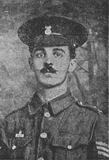
Norman Bernard Pearce, Corporal, 33031, Norfolk Regiment. Norman was the son of Benjamin and Ellen Pearce, of Brompton House, Corwen. He was working at the Post Office in Tunstall when war broke out, and enlisted at Liverpool into the South Lancashire Regiment in November 1914. Norman was posted to France on 1 May 1915, joining the 2nd Battalion, South Lancashire Regiment, which was attached to 7 Brigade, 3rd Division. Norman was gassed and wounded soon after reaching the front and was sent to Northampton Hospital for treatment. After leaving hospital he was posted to Egypt, joining the 3rd (Garrison) Battalion, South Lancs in March 1916, and in May 1917 was transferred to the 1/5th Battalion, Norfolk Regiment. The battalion was made famous when the story reached Britain that it had ‘walked into a cloud of smoke’ in Gallipoli and never seen again. It was attached to 163 Brigade, 54th (East Anglian) Division, and after evacuation from Gallipoli to Egypt joined the EEF and took part in the Palestinian offensive in 1917. The Division took part in the unsuccessful First and Second Battles of Gaza early in the year, then on the night of 1 November 1917 took part in the Third Battle of Gaza, which resulted in successfully opening the way to Jerusalem. Norman was killed in action on 2 November 1917, during the second day of the battle. He was 21 years old and is buried in Gaza War Cemetery, Israel.
Peter Phillips, Private, 290435, Royal Welsh Fusiliers. Peter was the son of John and Ann Phillips, of 8, London Road, Corwen. He worked as a Lamp Cleaner for the Great Western Railway prior to the war. Peter had enlisted at Corwen into the 7th Battalion, Royal Welsh Fusiliers on 1 November 1911, and had attended the summer Territorial Camps at Carnarvon, Rhyl and Aberystwyth over the coming years. Following the outbreak of war Peter was mobilised with the battalion at Newtown. The battalion was part of North Wales Brigade, Welsh Division and moved to Conway until the end of the month, before moving to Northampton. In December the Division moved to Cambridge and then in May 1915 to Bedford, where the Division was numbered and the formation became 158 Brigade, 53rd (Welsh) Division. On 19 July 1915 the entire Division sailed from Devonport for Imbros and on 9 August 1915 landed at Suvla Bay. The Division was eventually evacuated from Gallipoli in December 1915, moving to Egypt to join the EEF, and helped guard the Suez Canal before taking part in operations to drive the Turks out of the Sinai. The EEF then turned its attention onto driving the Turks out of Palestine, and on 26 March 1917 launched its first offensive against the coastal city of Gaza, which guarded the road to Jerusalem. Initial gains during the day were lost when the assaulting divisions lost touch with each other and communication broke down when a thick fog cloaked the battlefield. Peter was posted as missing following the days fighting, and was later officially recorded as having been killed on that date. The 26-year-old has no known grave and is commemorated on the Jerusalem Memorial, Israel.
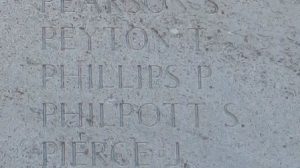
David Rees, Sergeant, 290395, Royal Welsh Fusiliers. David was the son of Humphrey and Jane Rees of Reliance House, Corwen. He worked as a Joiner prior to the war and had enlisted at Corwen into the 7th Battalion, Royal Welsh Fusiliers on 5 March 1909. David had attended the Annual Summer Camp every year thereafter, and by the outbreak of war had been promoted to Corporal. He was mobilised with the battalion at Newtown. The battalion was part of North Wales Brigade, Welsh Division and moved to Conway until the end of the month, before moving to Northampton. In December the Division moved to Cambridge and then in May 1915 to Bedford, where the Division was numbered and the formation became 158 Brigade, 53rd (Welsh) Division. On 19 July 1915 the entire Division sailed from Devonport for Imbros and on 9 August 1915 landed at Suvla Bay. The Division was eventually evacuated from Gallipoli in December 1915, moving to Egypt to join the EEF, and helped guard the Suez Canal before taking part in operations to drive the Turks out of the Sinai. The EEF then turned its attention onto driving the Turks out of Palestine, and on 26 March 1917 launched its first offensive against the coastal city of Gaza, which guarded the road to Jerusalem. Initial gains during the day were lost when the assaulting divisions lost touch with each other and communication broke down when a thick fog cloaked the battlefield. David had been killed in action during the days fighting. He was 28 years old and is buried in Gaza War Cemetery, Israel.
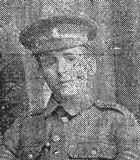
H P Roberts, Private, Royal Welsh Fusiliers. This man cannot presently be identified.
Owen Roberts, Private, 74165, Sherwood Foresters. Owen was the son of William and Laura Roberts, of Festiniog. He worked as a waggoner at Corwen prior to the war and married Elizabeth Ann Jones, of 3, Queen’s Square, Corwen on 5 February 1916. Owen enlisted into the 3rd Battalion, Royal Welsh Fusiliers at Wrexham on 30 January 1917, and was posted to Litherland Camp for training. On 19 September 1917 Owen embarked for France, and was posted to No 5 Infantry Base Depot at Étaples. He was posted from there to the 19th Battalion, Royal Welsh Fusiliers, which was attached to 119 Brigade, 40th (Bantam) Division. Owen was wounded during the Divisions attack on Bourlon Wood, during the Battle of Cambrai, on 24 November 1917, and was admitted to the 2nd Canadian General Hospital at Le Treport. Once he had recovered from his wounds he returned to the battalion, but it was disbanded on 6 February 1918, so Owen was posted to the 10th Battalion, Sherwood Foresters (Notts and Derby Regiment), which was attached to 51 Brigade, 17th (Northern) Division. On 21 March 1918 Owen’s new battalion was in the line at Hermies when the German Spring Offensive hit, and over the coming days fought a stubborn withdrawal towards Bouzincourt. The battalion then had a short rest before taking over a section of the front line near Mesnil on 15 April. Owen was badly wounded during a counter-attack here on 21 April 1918, and died of his wounds on the following day, 22 April 1918, aged 23. He is buried in Aveluy Wood Cemetery, (Lancashire Dump), Mesnil-Martinsart, France.
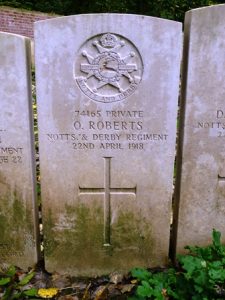
William Ernest Salmon, Private, 15352, The Loyal North Lancashire Regiment. William was born at Denbigh on 20 January 1881, the son of Thomas and Jane Salmon. The family had moved to Corwen by 1888, and William was educated there before gaining work with the Great Western Railway. He enlisted into the 8th Battalion, The Loyal North Lancashire Regiment at Manchester on 2 September 1914. The battalion formed at Preston in September 1914 as part of 74 Brigade, 25th Division and moved to billets in Boscombe in December 1914. William did not embark for overseas service with the battalion in September 1915, but remained in England with the 3rd Battalion. William took ill during the summer of 1916, and was taken to the Cliff Hospital at Felixstowe, where he was diagnosed as having pancreatic cancer. He died of cancer there on 22 October 1916, aged 35. William is buried in Felixstowe New Cemetery.
David Thomas, Private, 20464, Royal Welsh Fusiliers. David was the son of Ellis and Gwen Thomas, of Hafod Fawr, Blaenau-Festiniog. He lived at Tai Ucha, Corwen for several years prior to the war. David enlisted at Colwyn Bay into the 14th Battalion, Royal Welsh Fusiliers. The battalion was raised at Llandudno by the Welsh National Executive Committee, joining 128 Brigade, 43rd (Welsh) Division and trained in North Wales before moving to Winchester in the summer of 1915, where the formation became renumbered 113 Brigade, 38th (Welsh) Division. The Division moved to France on 2 December 1915 and moved to the Nursery Sector near Fleurbaix for trench initiation alongside the Guards Division. The Division then held a sector of the line near Cuinchy before marching south to the Somme sector in June 1916 to take part in the assault on Mametz Wood. The first attack on the wood was launched on a two-battalion front on 7 July, but failed, and the Divisional Commander, Sir Ivor Philipps, was replaced before the Division attacked again on a two Brigade front on 10 July 1916. David was killed in action during heavy fighting that day. The 24-year-old has no known grave, and is commemorated on the Thiepval Memorial, France.
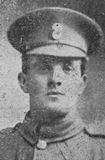
Arthur Phillip Williams, Private, 19999, Royal Welsh Fusiliers. Arthur was the son of William and Jane Williams, of Mona House, Llangefni, Anglesey. He lived at Bradford House, Corwen prior to the war and was employed as manager of the Ironmongers at Vulcan House, Corwen. Arthur enlisted at Llangollen into the 16th Battalion, Royal Welsh Fusiliers soon after the outbreak of war. The battalion was raised at Llandudno by the Welsh National Executive Committee from a cadre from the 13th Battalion, joining 128 Brigade, 43rd (Welsh) Division and trained in North Wales before moving to Winchester in the summer of 1915, where the formation became renumbered 113 Brigade, 38th (Welsh) Division. The Division moved to France on 2 December 1915 and moved to the Nursery Sector near Fleurbaix for trench initiation alongside the Guards Division. The Division then held a sector of the line near Cuinchy before marching south to the Somme sector in June 1916 to take part in the assault on Mametz Wood. The first attack on the wood was launched on a two-battalion front on 7 July, but failed, and the Divisional Commander, Sir Ivor Philipps, was replaced before the Division attacked again on a two Brigade front on 10 July 1916. Arthur was reportedly shot through the heart by a sniper while conveying despatches from the wood on 11 July 1916. The 24-year-old has no known grave and is commemorated on the Thiepval Memorial, France. (The CWGC records state he fell on 9 July, but all other records state 11 July).
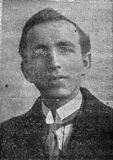
David Williams, Private, 1000441, Canadian Infantry. David was born at Corwen on 17 January 1885, the son of John and Alice Williams, of Pencoed Ucha. He emigrated to Canada prior to the war, and lived at Tumble, Manitoba, where he worked as a labourer. He enlisted at Russell, Manitoba into the 226th Overseas Battalion, Canadian Expeditionary Force on 14 January 1916. The battalion sailed from Halifax for England aboard the SS Olympic on 13 December 1916 and upon arrival in Liverpool on 26 December, the battalion moved to Dilgate. On 31 May 1917 David was drafted to France and posted to the 78th Battalion, Canadian Infantry. The battalion was in the Arras sector, attached to 12 Brigade, 4th Canadian Division. David saw his first action during several engagements against the Germans South of the Souchez River throughout June, which led to the Canadians capturing Avion. From 15 August 1917 the Canadian Corps took part in the Battle of Hill 70, which was a diversionary attack around Lens, to draw German attention away from the main offensive at Ypres. David was killed in action here on 21 August 1917, aged 32. He is buried in La Chaudiere Military Cemetery, Vimy, France.
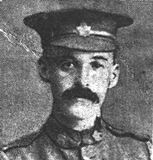
David Williams, Corporal, 290478, Royal Welsh Fusiliers. David was the son of William and Margaretta Williams, of Church View, Corwen. He worked as a farm labourer at Trwyd-Bach, Corwen prior to the war. David had enlisted into the 7th Battalion, Royal Welsh Fusiliers at Corwen on 24 April 1913, and had taken part in two Territorial Summer Camps prior to the war. Following the outbreak of war David was mobilised with the battalion at Newtown. The battalion was part of North Wales Brigade, Welsh Division and moved to Conway until the end of the month, before moving to Northampton. In December the Division moved to Cambridge and then in May 1915 to Bedford, where the Division was numbered and the formation became 158 Brigade, 53rd (Welsh) Division. On 19 July 1915 the entire Division sailed from Devonport for Imbros and on 9 August 1915 landed at Suvla Bay. The Division was eventually evacuated from Gallipoli in December 1915, moving to Egypt to join the EEF, and helped guard the Suez Canal before taking part in operations to drive the Turks out of the Sinai. The EEF then turned its attention onto driving the Turks out of Palestine, and on 26 March 1917 launched its first offensive against the coastal city of Gaza, which guarded the road to Jerusalem. The battle failed due to a thick fog clouding the battlefield, and a second attack on Gaza was launched the following month, which also failed. As a result, General Sir Edmund Allenby took over command of the EEF and reorganised his army before launching a third assault on Gaza, on a wider front running from Beersheba to Gaza, on 1 November 1917. The battle was a success and opened the way to Jerusalem for the EEF. David was wounded during the Battle for Jerusalem, and died of his wounds on 29 December 1917, aged 24. He is buried in Jerusalem War Cemetery, Israel.
Howard Glynne Williams, Second Lieutenant, King’s Royal Rifle Corps. Howard was born on 10 May 1894, the son of Reverend Griffith Williams and Edith Williams (nee Beale), of The Rectory, Corwen. He was educated at Denstone College, Stafford and at St. Catherine’s College, Cambridge. Howard was in his second year at Cambridge when war broke out and he enlisted into the King’s Royal Rifle Corps, and was commissioned on 2 January 1915 into the regiment. On 4 June 1915 he embarked for France to join the 3rd Battalion, King’s Royal Rifle Corps, which was attached to 80 Brigade, 27th Division. On 18 November the Division sailed for Salonika, and Howard spent seven months there before suffering an accident, which caused him to be hospitalised in Malta. Howard returned home and underwent an operation, but it was to no avail, and he sadly died at home at Corwen on 5 January 1917, aged 22. Howard was buried with full military honours in Ss. Mael and Sulien Churchyard, Corwen four days later. His brother Noel was killed in 1918.
Howell Williams, Private, 48936, Lancashire Fusiliers. Howell was the son of Samuel and Anne Williams, of Tynygroes, Llandrillo, Corwen. He worked as a Millinery Salesman at Altrincham prior to the war and married Elizabeth Ellen Williams in 1915. Howell enlisted at Altrincham into the Middlesex Regiment, but upon completing his training was transferred to the 16th Battalion, Lancashire Fusiliers. The battalion was attached to 96 Brigade, 32nd Division, and had been in France since the end of December 1915. The Division fought throughout the Somme offensive in 1916, and in March 1917 followed the German Retreat to the Hindenburg Line. The Division did not take part in a major battle until being caught up in the German Spring Offensive from 21 March 1918. By the beginning of April 1918 the battalion was in positions at Ayette, to the south of Arras. Towards the end of the month the battalion moved into billets for a rest, and then on 11 May moved into new positions in the line at Boisleux Au Mont to begin a tour of duty, and after ten days moved back into billets. Again, after just four days rest, the battalion moved back into the same sector on 21 May to begin another tour. Howell was killed in action during this spell back in the line, on 28 May 1918, aged 39. He is buried in Cabaret-Rouge British Cemetery, Souchez, France.
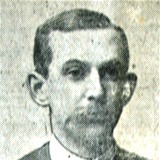
John Caradog Williams, Private, 57082, North Staffordshire Regiment. John was the son of John and Charlotte Williams, of Endyrnion Shop, Corwen. He worked as a shop assistant at his father’s bicycle shop prior to enlisting into the army at Dolgellau on 21 August 1917, and was posted to the 72nd Training Reserve Battalion at Prees Heath. Once he had completed his training, John was posted to the King’s Liverpool Regiment, and embarked for France on 1 April 1918. He arrived in Boulogne that afternoon, and was posted to the Bull Ring at Étaples, before being posted to the 9th Battalion, North Staffordshire Regiment on 11 April. The battalion was the Pioneer Battalion to the 37th Division, and had taken heavy casualties during the German Spring Offensive during the previous weeks. On 11 May 1918 John was in the line with his battalion, carrying out trench repairs at Foncquevillers, when the Germans launched a barrage of 200 gas shells onto the area. John suffered badly from the gas, and was treated in the 12th General Hospital at Rouen before being sent to a specialist Hospital at Runcorn. By the end of November, he was discharged and sent to Lichfield Barracks, before being discharged from the army. His health had been ruined by the gas, however, and after months of suffering, John died at home on 29 May 1919, aged 19. He was buried with full military honours in Corwen Burial Ground.
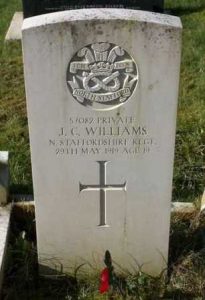
Noel Griffith Williams, Private, 356710, The King’s (Liverpool Regiment). Noel was born on 30 December 1898, the son of Reverend Griffith Williams and Edith Williams (nee Beale), of The Rectory, Corwen. He was educated at St. John’s School, Leatherhead prior to enlisting at Liverpool into the King’s (Liverpool Regiment), on 15 October 1915, at the age of 16. He was posted France in January 1918, joining the 1/10th Battalion, King’s (Liverpool Regiment), known as the Liverpool Scottish, which was attached to 166 Brigade, 55th (West Lancs) Division. The Division had suffered a loss of reputation following its almost annihilation during the counter-attack at Cambrai the previous year, and was at Bomy, near Fruges carrying out a system of intensive training. The Division moved back into the front line at Givenchy and Festubert on 15 February, and faced numerous German raids in March. April was at first much quieter, but it was a lull before the storm, as the Germans were preparing to launch another offensive here. During the morning of 9 April, the Germans launched their offensive, so Noel’s battalion was moved from reserve into the front line at Loisne Central. Despite being bombarded by German artillery, the battalion managed to keep the Germans at bay with intensive machine-gun fire. Fighting continued the following days, and on the night of 12 April the battalion was ordered to make a counter-attack on a German strong point, then spent the night there, in a position named Route A Keep, before relieving the garrisons at Festubert Keep, Festubert Central and South. Noel was killed in action during the reliefs that day, 13 April 1918. The 19-year-old has no known grave and is commemorated on the Loos Memorial, France. His brother Howard had died the previous year.
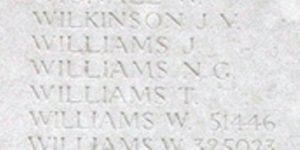
Owen Richard Williams, Private, 5799, Royal Welsh Fusiliers. Owen was born in Carnarvon in about 1879. He had served with the Royal Welsh Fusiliers prior to 1911, and was an army reservist when he began work as a Wireman for the GPO. Owen married Elizabeth Ellen Roberts, of Brook Street, Corwen, on 9 January 1911, and the couple already had a daughter, Eleanor, born a year earlier. The couple then moved to 4, Mountain Street, Carnarvon. Owen re-enlisted at Wrexham into the 3rd Battalion, Royal Welsh Fusiliers on 1 September 1914 and was posted to the 1st Battalion, Royal Welsh Fusiliers in France on 11 January 1915. The battalion was in the Ypres Salient attached to 22 Brigade, 7th Division and had been in France since landing at Zeebrugge on 7 October 1914. Owen joined up with the battalion in billets at Rue Bataille, near Le Touquet. On 8 March the 7th Division received orders for its part in the forthcoming Battle of Neuve Chapelle, and from 10-13 March took part in desperate fighting during the offensive. Routine trench warfare then began again over the coming weeks, until the launching of the Battle of Aubers Ridge on 9 May, when the 7th Division again got caught up in the thick of the fighting. Less than a week later the Division was called upon again, and on 16 May 1915 launched a diversionary attack on Festubert, to draw German attention away from a larger French offensive to the South. Owen was killed when the 1st Royal Welsh Fusiliers made their charge across the battlefield that day. The 36-year-old has no known grave and is commemorated on the Le Touret Memorial, Richebourg-L’avoue, France.
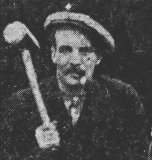
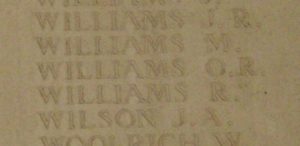
Robert Williams, Private, 2727, Royal Welsh Fusiliers. Robert was the son of Rees and Elizabeth Williams, of 3, Corwen Terrace, Corwen. He worked as a van driver prior to the war. Robert enlisted at Corwen into the 7th Battalion, Royal Welsh Fusiliers. The battalion was a Territorial unit, which mobilised for war at Newtown in August 1914, as part of North Wales Brigade, Welsh Division and moved to Conway until the end of the month, before moving to Northampton. In December the Division moved to Cambridge and then in May 1915 to Bedford, where the Division was numbered and the formation became 158 Brigade, 53rd (Welsh) Division. On 19 July 1915 the entire Division sailed from Devonport for Imbros and on 9 August 1915 landed at Suvla Bay. The infantry moved off the beaches into the bush, but due to a lack of maps and no knowledge of the terrain, many of the units became disorientated, and the situation became chaotic and, coupled with the conditions, the Division lost many men over the coming weeks. Robert was among a large number of men to contract dysentery due to the unsanitary conditions on the Peninsula, and he was evacuated by Hospital Ship to Lemnos where he died of dysentery on 14 October 1915, aged 29. Robert is buried in Portianos Military Cemetery, Lemnos.
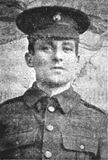
Robert Evan Williams, Private, 201133, Royal Welsh Fusiliers. Robert was the illegitimate son of Sarah Ellen Williams, of 1, Crown Terrace, Corwen. His mother married prior to 1917 and moved to Wrexham. Robert worked as a cowman at Tynywern, Llangar, Corwen prior to the war and enlisted at Southsea into the 4th Battalion, Royal Welsh Fusiliers. He was posted to France at some time in 1917, joining the 1/4th Battalion, Royal Welsh Fusiliers, which was attached to the 47th Division. Early in 1917 the Division moved north from the Somme to the Ypres Salient, and took part in the Battle of Messines Ridge, then in November 1917 moved south again, taking part the Battle of Cambrai. In March 1918 the Division were situated near St. Quentin, at Lechelles, and faced the German Spring Offensive here on 21 March 1918. The 4th Royal Welsh Fusiliers, a Pioneer Battalion, was forced to take up arms and moved into the line on the Metz to Trescault Road, where it dug in and waited. By the following morning, under heavy artillery fire, the Division withdrew to Highland Ridge, but received orders to advance and occupy Dessart Ridge. Robert was killed in action at some time during this chaotic day, 22 March 1918, aged 22. He has no known grave and is commemorated on the Arras Memorial, France. The war memorial at Corwen commemorates just one man named Robert Evan Williams. Oddly there were two men of this name, and of the Royal Welsh Fusiliers, who fell who were from Corwen, and both had at one stage in their lives lived in 1, Crown Terrace!
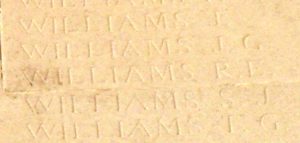
Robert Evan Williams, Private, 290438, Royal Welsh Fusiliers. Robert was the son of Evan and Jane Williams, of 1, Crown Terrace, Corwen. He worked as a Groom for Mr Mousley at Bryntirion prior to the war. Robert enlisted at Corwen into the 7th Battalion, Royal Welsh Fusiliers on 19 January 1912, and attended all of the annual Territorial summer camps over the coming years. The battalion was a Territorial unit, which mobilised for war at Newtown in August 1914, as part of North Wales Brigade, Welsh Division and moved to Conway until the end of the month, before moving to Northampton. In December the Division moved to Cambridge and then in May 1915 to Bedford, where the Division was numbered and the formation became 158 Brigade, 53rd (Welsh) Division. On 19 July 1915 the entire Division sailed from Devonport for Imbros and on 9 August 1915 landed at Suvla Bay. The Division was eventually evacuated from Gallipoli in December 1915, moving to Egypt to join the EEF, and helped guard the Suez Canal before taking part in operations to drive the Turks out of the Sinai. The EEF then turned its attention onto driving the Turks out of Palestine, and from 26 March 1917 began the first of Three Battles of Gaza, which eventually opened the road to Jerusalem. Robert survived the terrible rigours of the Gallipoli and Palestinian campaigns, but contracted pneumonia in Alexandria and died in hospital there on 29 December 1918, aged 23. He is buried in Alexandria (Hadra) War Memorial Cemetery, Egypt. Oddly there were two men of this name, and of the Royal Welsh Fusiliers, who fell who were from Corwen, and both had at one stage in their lives lived in 1, Crown Terrace!
Thomas Edward Williams, Private, 19401, Royal Welsh Fusiliers. Thomas was the son of Robert Edward Williams and Margaret Ellen Williams, of Hill Street, Corwen. He worked as a grocer at the Star Supply Stores at Corwen prior to enlisting at Corwen into the 16th Battalion, Royal Welsh Fusiliers soon after the outbreak of war. The battalion was raised at Llandudno by the Welsh National Executive Committee on 2 November 1914 in 128 Brigade, 43rd (Welsh) Division, and upon moving to Winchester on 29 April 1915 the formation became 113 Brigade, 38th (Welsh) Division. Thomas landed in France with the Division on 4 December 1915, and proceeded with it to the Nursery Sector near Fleurbaix for trench initiation alongside the Guards Division. During June 1916 the Division marched south to the Somme, and on 7 July 1916 attacked Mametz Wood. The initial attack failed, and it was three days later, on 10 July, that a fresh attack was mounted. After two days of heavy hand to hand fighting within the wood, the Germans withdrew, and the battered Welshmen moved via Hébuterne to Boesinghe, on the Yser Canal. Thomas was slightly wounded during the fighting in Mametz Wood, and upon recovering was posted back to the Division, joining the 14th Battalion, Royal Welsh Fusiliers. On 13 February 1917 the 14th Royal Welsh Fusiliers moved into the front line along the canal to begin a routine tour, and on the night of 17 February launched a trench raid against the Germans facing them. Heavy fighting and constant artillery barrages raged throughout the night as a result. Thomas was killed at some time on the following morning, on 18 February 1917, aged 21. He was buried by his comrades in Bard Cottage Cemetery, Belgium.
World War Two, 1914-1918
Ivor Edward Edwards, Fusilier, 4209907, Royal Fusiliers (City of London Regiment). Ivor was the son of Hugh and Mary Edwards, of Corwen. He married Winifred Jane Evans, of Corwen, in 1940. Ivor enlisted into the army and was posted to the Middle East with the 8th Battalion, Royal Fusiliers (City of London Regiment). The battalion was attached to the 167th Infantry Brigade, 56th (London) Division, and saw heavy fighting in the final stages of the Tunisia Campaign. In September 1943 the Division took part in the landings at Salerno, as part of the Allied invasion of Italy, later crossing the Volturno Line, before being held up at the Winter Line and fought at the Battle of Monte Cassino. Ivor was killed during fighting here on 20 January 1944, aged 36. He is buried in Minturno War Cemetery, Italy.
Tegwyn Edwards, Aircraftman, Royal Air Force. Tegwyn was born on 1 February 1915, the son of John Henry Edwards and Elizabeth Edwards (nee Jones), of Tynycefn Cottages, Corwen. Very little else is known of him, as he is not commemorated by the CWGC, but he died in the Wrexham area on 18 June 1942, aged 27. The Corwen memorial states that he served as an Aircraftman with the Royal Air Force, but as WW2 service records are not publicly available as yet, nothing more is known.
John Nisbet Francis, Private, 13102853, Pioneer Corps. John was born at Hampton Park, Herefordshire on 9 March 1904, the son of John and Agnes Francis. He married Elizabeth Ann Evans at Ludlow in 1937, and by 1939 the couple had set up home at 2, Cae Coed, Corwen, where John had found work as a gardener. He enlisted into the army after the outbreak of war and was posted to Kenya with the Pioneer Corps. Little is known of his military service, but John died in Kenya on 12 May 1945, aged 41, and is buried in Nairobi War Cemetery, Kenya.
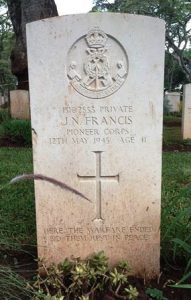
Frederick Edward Hughes, Boy 1st Class, P/JX 157826, Royal Navy. Frederick was born at Corwen on 12 February 1923, the son of Edward David Hughes and Flossie Daisy Hughes (nee Printer). He enlisted into the Royal Navy prior to the war, and after completing his training was posted aboard the Revenge-class Battleship HMS Royal Oak. She had been completed in 1916 and saw service in the Battle of Jutland. She continued to serve in the Royal Navy between the wars, but was found to be too slow for front line duty, and was confined to defensive duties in the Royal Naval base at Scapa Flow. At just after midnight on 14 October 1939, Royal Oak was anchored safely in Scapa Flow, with most of her crew asleep. The German submarine U-47, under the command of Gunther Prien, had sneaked into the anchorage past its torpedo nets, and fired a salvo of three torpedoes, one of which struck Royal Oak in the bow. The explosion awoke the crew, who thought there had been an internal explosion within the ship, but soon afterwards, U-47 fired another salvo of torpedoes at her, which detonated one of her magazines, sending a fireball through the ships compartments, before she turned over and sank. Around 835 men died as a result of the sinking, a catastrophe which was hailed as a great success in Germany. Frederick was just 17 years old when he was killed in the sinking of Royal Oak. He has no known grave and is commemorated on the Portsmouth Naval Memorial, Hampshire.
John Hugh Hughes, Fusilier, 4190893, Royal Welch Fusiliers. John was born in Corwen in 1918. He married Annie Davies, of Cefn Mawr in 1938. John enlisted into the 6th Battalion, Royal Welch Fusiliers following the outbreak of war. The battalion was attached to 158 Brigade, 53rd (Welsh) Division, and spent the early years of the war on home defence duties, in Northern Ireland, then in the south of England. At the end of June 1944, the Division landed in Normandy, to take part in the break-out from the beach-head and by 28 June the entire Division had concentrated there. The first major action undertaken by the Division came on the night of 16/17 July when 158 Brigade was ordered to capture the town of Evrecy. The Brigade moved past the front lines just before midnight and began to advance on the town, but got held up by the River Guighe, and began taking heavy casualties, so was ordered to withdraw. John was killed during the fighting that morning, 17 July 1944, aged 36. He is buried in Hottot-Les-Bagues War Cemetery, France.
Gwilym Jones, Driver, T/145372, Royal Army Service Corps. Gwilym was born in Corwen in about 1918. He served with the 237 Infantry Brigade Company, Royal Army Service Corps. Very little is presently known of him, but he died in the Nottingham area on 8 June 1943, aged 25, and is buried in Rhosllannerchrugog Cemetery.
Thomas Owen Jones, Driver, T/61819, Royal Army Service Corps. Thomas was the son of Griffith Owen Jones and Margaret Ellen Jones, of Plas Cedyrn, Corwen. He enlisted into the Royal Army Service Corps, and was posted to India. Little else is known of his service, but Thomas died in India on 13 June 1942, aged 20. He is buried in Imphal War Cemetery, India.
Alfred Leslie Nock, Staff Serjeant, S/117179, Royal Army Service Corps. Alfred was born on 22 July 1914, the son of Alfred and Margaret Nock, of Llanrwst. He lived at Arosfa, Corwen prior to the war and worked in the town as a Bank Clerk. He enlisted into the Royal Army Service Corps following the outbreak of war and was posted to Iceland with the 10 Base Supply Depot, RASC. Alfred died in Iceland on 13 September 1942, aged 28. He is buried in Reykjavik (Fossvogur) Cemetery, Iceland.
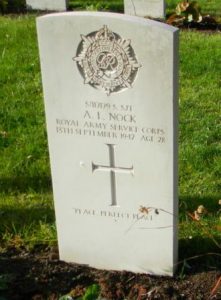
Edward Owen, Private, 4032501, King’s Shropshire Light Infantry. Edward was the son of Evan and Prudence Owen, of Corwen. He enlisted into the 2nd Battalion, King’s Shropshire Light Infantry following the outbreak of war. The battalion had been in Jamaica at the outbreak of war, and after returning to Britain, began to prepare to move to the Mediterranean, to take part in the invasion of Sicily. Plans were then changed, and the battalion instead remained in Britain before taking part in the D-Day landings on 6 June 1944. The battalion encountered the 21st Panzer Division whilst attempting to capture Caen that day, and suffered heavy casualties. Edward was killed in action on Day-Day, 6 June 1944, aged 28. He is buried in La Delivrande War Cemetery, Douvres, France.
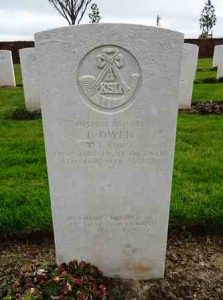
Thomas Robert Edgar Roberts, Lance Serjeant, 2734112, Welsh Guards. Thomas was the son of David and Annie Jones Roberts, of Corwen. He married Ena Gwendoline Roberts, of Colwyn Bay, in 1940. Thomas enlisted into the Welsh Guards, and was posted to the 1st Battalion, Welsh Guards. The battalion had been in France with the BEF at the start of the war, and took part in heavy fighting during the defence of Arras, before retreating towards the coast, and saw heavy fighting during several actions whilst moving towards Dunkirk. After evacuation, the 1st Welsh Guards remained in Britain until landing in Normandy with the Guards Armoured Division on D-Day, and saw its first action near Cheux. Thomas was killed in Normandy on 1 July 1944, aged 30. He is buried in St. Manvieu War Cemetery, Cheux, France.
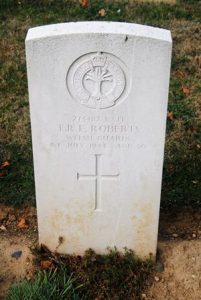
James Webb, Able Seaman, D/SSX 30222, Royal Navy. James was born at Wallasey on 8 June 1921, the son of James and Muriel Webb. The family later moved to 6, Queen’s Square, Corwen. James enlisted into the Royal Navy, and after completing his training was posted aboard the K-class destroyer, HMS Kandahar, which had been launched on 21 March 1939. On 20 December 1941, Kandahar was part of Force K, which had been despatched to intercept an Italian convoy bound for Tripoli, when she struck an Italian mine whilst attempting to rescue the stricken cruiser Neptune. Kandahar was scuttled the next day by the destroyer Jaguar, with the loss of 73 men. James was 20 years old when he was killed in the explosion on 20 December 1941. He has no known grave and is commemorated on the Plymouth Naval Memorial, Devon.
David Williams, Private, 14200992, South Wales Borderers. David was the son of William and Lilian Williams, of Corwen. He enlisted into the army following the outbreak of war and was posted to the 6th Battalion, South Wales Borderers. The 6th Battalion was raised in Glanusk Park, Breconshire, in July 1940 and trained as an infantry regiment until April 1942, when it converted to armour, and sailed for Bombay in October 1942. The battalion continued to train in India as a tank regiment until March 1943, when it was reconverted to infantry and trained as an amphibious assault unit. The battalion was then posted to Burma to take part in the campaign in the Arakan. The first major action the battalion took part in was the famous capture of the Mayu Tunnels, which were used by the Japanese for storage and as gun emplacements. It continued to take part in ferocious fighting in Burma, capturing the village of Sahmaw Chaung, and by the end of the battle continued the campaign to drive the Japanese out of Burma. David died in Burma on 26 January 1945, aged 22. He is buried in Taukkyan War Cemetery, Myanmar.
Robert Rees Williams, Guardsman, 2734245, Welsh Guards. Robert was born in Corwen in 1917. Very little else is known of him, but he served with the Welsh Guards during the war and died in Bala on 24 April 1945, aged 28. He is buried in Corwen Burial Ground.
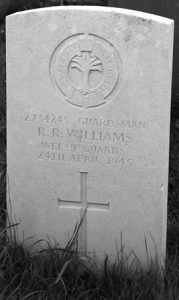
Northern Ireland
Robert Dylan Vaughan Jones, Private, 24441381, Parachute Regiment. Robert was born at Corwen on 14 November 1960. He served with the 2nd Battalion, Parachute Regiment. Robert was among 18 soldiers killed when the IRA ambushed a British Army convoy at Warrenpoint, Co. Down, on 27 August 1979, and exploded two large roadside bombs at Narrow Water Castle. The attack happened on the same day that Lord Louis Mountbatten was murdered by the IRA. Robert was just 18 years old, and his body was returned home for burial in Corwen Cemetery. Robert is also commemorated by a window panel in the Church of St Mael and St Sulien, Corwen.
Private S. Griffiths. There is an individual plaque affixed onto one of the memorial gates named to Private S. Griffiths. Sadly, there are no further details to help identify him.